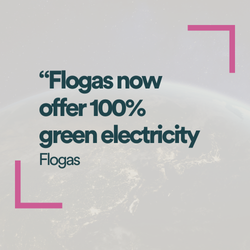Environmental and Green Advertising
Advertising Code - Section 15
Environmental Claims
Making environmental statements or claims without providing sufficient context, qualifications, or necessary details could lead to misleading your among customers and the public.
If you make environmental claims in advertising, you must be able to provide substantiation to back up your claims
FREE COPY ADVICE
Our free Copy Advice service allows you to check your ads against the Advertising Code before you publish them. Email copyadvice@adstandards.ie

Recent Cases
Further Reading: Global Guidance on Environmental Claims can be downloaded here.
Environmental Claims
Important: The following rules relate to Environemental Claims. All advertising and marketing communications in Ireland adhere to the full Code of Standards for Advertising and Marketing Communications in Ireland.
15.1 The following definitions apply in this Section:
(a) “Environment” includes but is not limited to, ecosystems and their constituent parts, including people and communities, natural and physical resources, and the qualities and characteristics of locations, places and areas.
(b) “Environmental claim” means, but is not limited to, any statement, symbol or graphic that indicates an environmental aspect of a service, product, component or packaging, and includes references to sustainability, recycling, carbon neutrality, energy efficiency, use of natural products or impact on animals and the natural environment.
(c) “Environmental impact” means any change to the environment, whether adverse or beneficial, wholly or partially resulting from an organisation’s activities or products.
(d) “Lifecycle” means consecutive and interlinked stages of a product from raw material acquisition or generation of natural resources to final disposal or use, and recycling.
15.2 Environmental claims should not be used without qualification unless advertisers can provide substantiation that their product will cause no environmental damage. Absolute claims should be supported by a high level of substantiation.
15.3 Qualified claims and comparisons may be acceptable if advertisers can demonstrate that their product provides an improvement in environmental terms, either against their competitors or their own previous products. Qualified claims should also be capable of substantiation.
15.4 Where there is a significant division of scientific opinion or where evidence is inconclusive this should be reflected in any statements made in the marketing communication. Advertisers should not suggest that their claims command universal acceptance if this is not the case.
15.5 The basis of any claim should be explained clearly and should be qualified where necessary. Unqualified claims may mislead if they omit significant information.
15.6 Advertisers should base environmental claims on the full lifecycle of the advertised product, unless the marketing communication states otherwise, and should make clear the limits of the lifecycle. If a general lifecycle claim cannot be justified, a more limited claim about specific aspects of a product might be justifiable. Advertisers should ensure claims that are based on only part of the advertised product’s lifecycle do not mislead consumers about the product’s total environmental impact.
15.7 If a product has never had a demonstrably adverse effect on the environment, marketing communications should not imply that the formulation has been changed to make it safe. It is legitimate, however, to make claims about a product whose composition has been changed or has always been designed in a way that omits chemicals known to cause damage to the environment.
15.8 Marketing communications should not mislead consumers about the environmental benefit that a product offers; for example, by highlighting the absence of an environmentally damaging ingredient if that ingredient is not usually found in competing products or by highlighting an environmental benefit that results from a legal obligation if competing products are subject to that legal obligation.
15.9 The use of extravagant language should be avoided, as should bogus and confusing pseudo-scientific terms. If it is necessary to use a scientific expression, its meaning should be clear.
15.10 Symbols may imply environmental claims in themselves. They should be simple and used in such a way that they do not convey false/incorrect impressions about the characteristics of goods or services. Such signs and symbols should not be used in such a way as to suggest official approval or third-party certification when no such approval or certification has
been given.
15.11 Marketing communications for waste collection services should include:
(a) the name of the permit holder or the waste collection permit register number; and
(b) the name of the local authority that issued same.
15.12 Marketing communications for waste oil burners should include a statement that the operator should have a licence to operate that oil burner.











